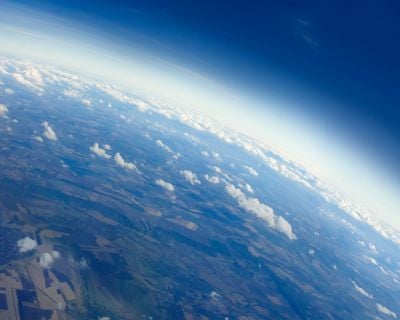Need Help?

Aviation accounts for approximately 2.5% of human-made global CO2 emissions but its impact on climate extends to non-CO2 effects such as contrails and nitrogen oxides (NOx).
Contrails are high-altitude ice-cirrus clouds which reflect incoming solar radiation and trap outgoing heat. On balance, they have a warming effect, with diurnal, seasonal and geographical variations. The scientific understanding of the non-CO2 climate effects of aviation has grown but significant uncertainties exist in predicting contrail formation and climate impact. No methods exist yet to monitor contrails on a per flight basis or tools to mitigate them at scale.
IATA and the aviation community, formed by industry, governments, universities, and research institutions are engaging in initiatives to further understand the climate impact of contrails and potential means of mitigation. In the meantime, the industry is collaborating with the research community by:
- Equipping commercial aircraft with on-board meteorological instruments to increase the confidence on where contrails might form and what their climate effect are.
- Participating in contrail avoidance trials to investigate the feasibility of navigational avoidance strategies and the impact on flight operations and the air space as a whole.
- Advancing the scientific understanding of the impact of alternative fuels and new engine technologies on non-CO2 effects through experiments and flight campaigns.
> View IATA’s position on non-CO2 emissions (pdf)
> Operational insights on contrails (pdf)
> FAQ about non-CO2 emissions and contrails (pdf)
Need Help?
Non-CO2 Emissions Explained
Air travel doesn’t just produce carbon dioxide (CO₂); it also releases other substances like water vapor, nitrogen oxides (NOₓ), sulphur oxides (SOₓ), soot, and aerosols. These are known as non-CO₂ emissions, and they occur mostly at high altitudes during cruising. While CO₂ is the most well-known greenhouse gas, these other emissions can also influence the climate—sometimes even more strongly—though their effects are harder to measure and predict.
One of the most visible non-CO₂ effects is contrails, the line-shaped clouds that sometimes form behind aircraft. These clouds are made of ice crystals and can trap heat in the atmosphere or reflect sunlight back into space. On a global scale, contrails tend to warm the planet, but their impact depends on many factors like weather conditions, location, and time of day.
Nitrogen oxides (NOₓ) from aircraft engines also play a complex role. They contribute to the formation of ozone, which warms the atmosphere, and reduce methane, which has a cooling effect. The overall result is currently a net warming, but this could change as the chemical makeup of the atmosphere evolves.
Aerosols—tiny particles released by aircraft—can either warm or cool the climate. Soot absorbs sunlight and warms the air, while sulphate particles reflect sunlight and cool it. These particles also affect cloud formation, but scientists still don’t fully understand how aviation emissions interact with clouds.
Unlike CO₂, the impact of non-CO₂ emissions depends heavily on when and where they are released. This makes it difficult to measure their climate effect for individual flights. While researchers have made progress in understanding these emissions, much remains uncertain, and more work is needed to accurately assess their role in climate change.
> Read the full overview (pdf)
Publications
This report commissioned by the community calls for a strengthening of collaboration between research and technological innovation, coupled with policy frameworks to address aviation’s non-CO2 emissions through more atmospheric data.
Short term (2024-2030): Prioritize the reduction of CO2 emissions over uncertainties in contrail detection and climate impact through.
Mid-term (2030-2040): Establish standards for data transmission, continuously validate models, and encourage aircraft manufacturers to include provisions for meteorological observations.
Longer term (2040-2050): Aircraft should be continuously providing data and the models and infrastructure should be reliable. We will have a more complete understanding of the non-CO2 effects of alternative fuels, with extended mitigation measures.
> Press release: More Data Needed to Understand Contrails Climate Effect & Develop Mitigations
IATA - Royal Aeronautical Society (RAeS) Workshop
This two-day event brought together scientists, airline experts, and other industry stakeholders to discuss the latest advances in research and technologies, share experiences, and exchange ideas and insights.



